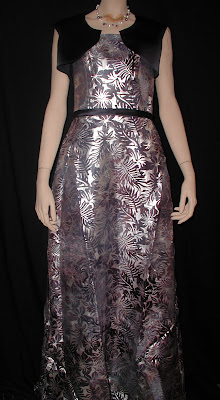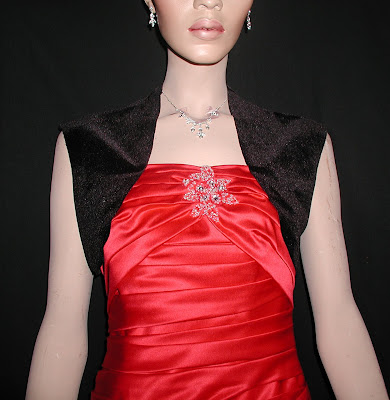
This is probably the fastest, easiest alteration so far.
The dress had pretty, sparkly spaghetti straps. It seemed a shame to cover them up, so I added wide straps to the outside of the original spaghetti straps, keeping the spaghetti straps on top. Here is how I did it.
1. Cut a 4" strip off the underlayer of the dress's skirt and finished the raw (cut) edge.
2. Laid the strip over the shoulder right at the outside of the strap, putting the commercially-finished edge to the outside (exact thread and stitch match).
3. Marked the angle of the dress on the strap in the front and the back, using tailor's chalk.
4. Cut the strap along the markings, about 1" below them.
5. Serged both edges to finish.
6. Gathered the front edge.
7. Pinned the strap to the dress (draping it over the shoulder) and carefully hand-stitched in place in along the front, back, and the strap.
I was really pleased with how it turned out, but I have one concern: I'm afraid this dress is going to gap in the front, between the straps. If it does, I'm going to hand-stitch some bracelet elastic along the lining on the inside, to make it hug the body, instead of gapping forward.

One good thing about this alteration: I took the material off the lining of the skirt. The sheer overlayer stayed the original length. So I didn't have to "shorten" the dress at all. (You can tell the lining has been shortened if you know to look - you can see it a little in the picture - but otherwise, I don't think it would be obvious.)

























